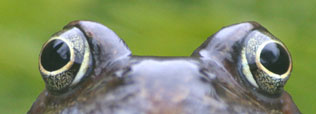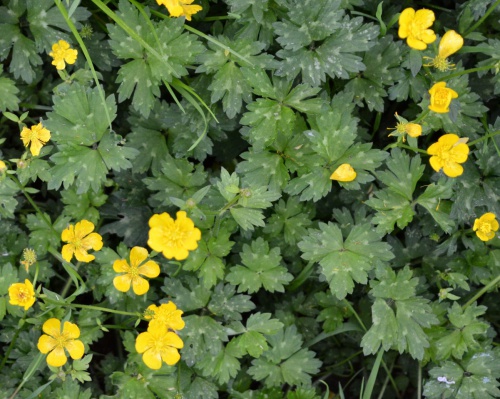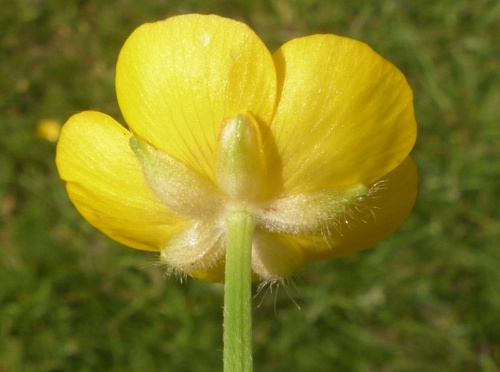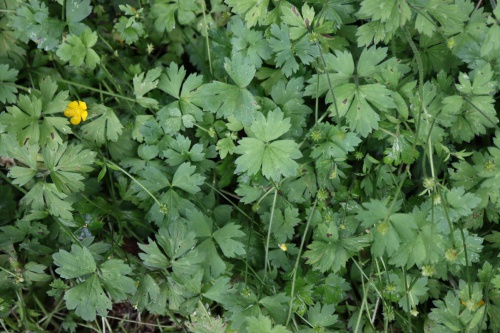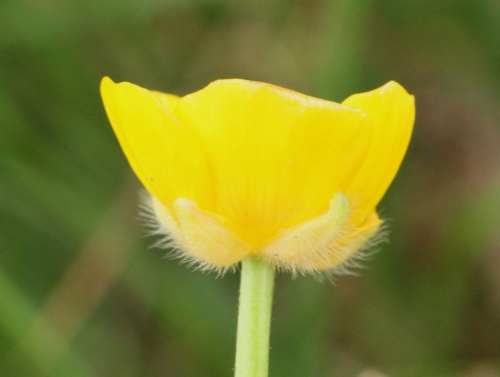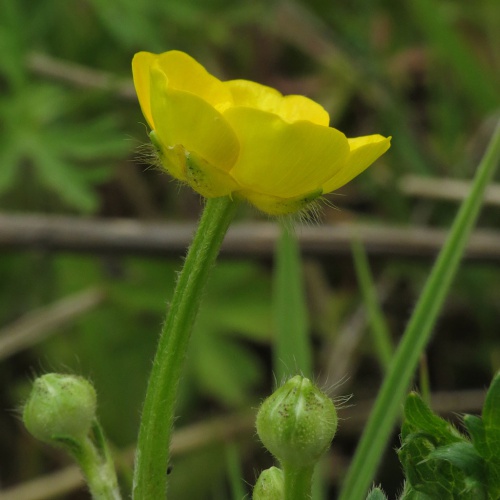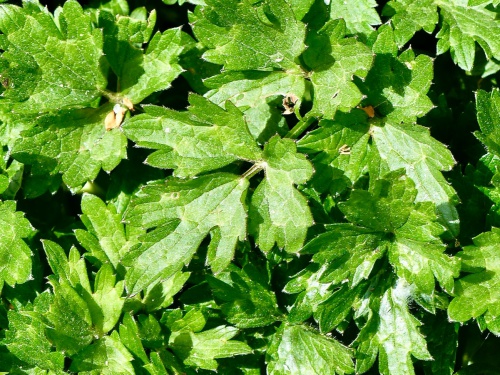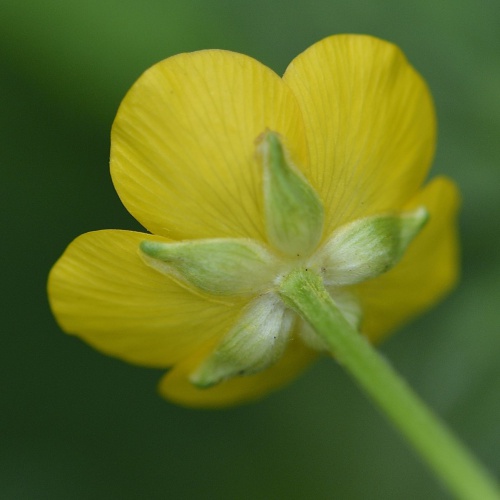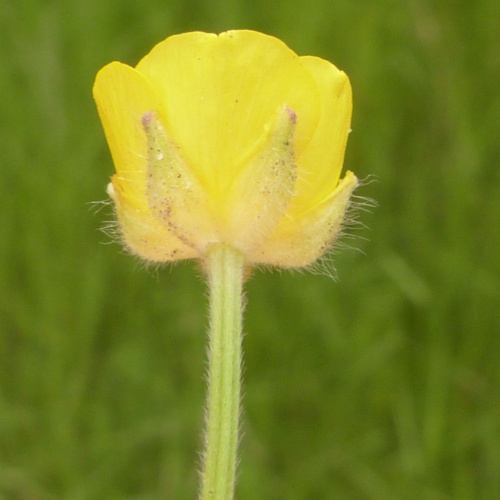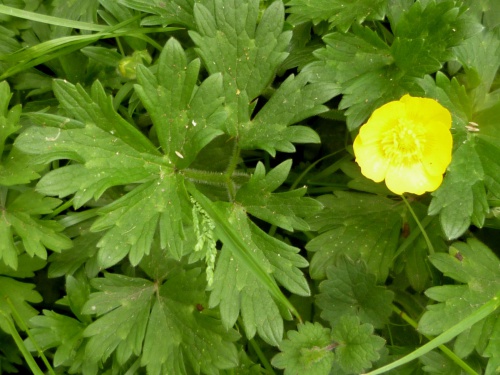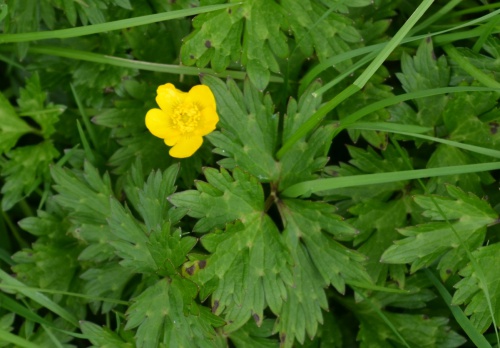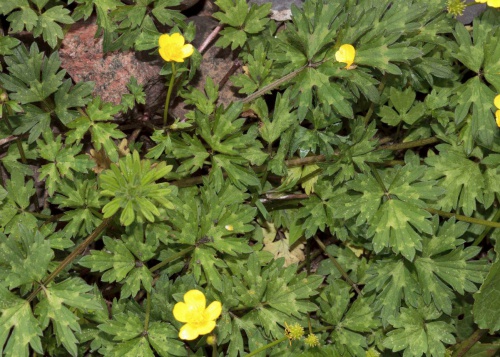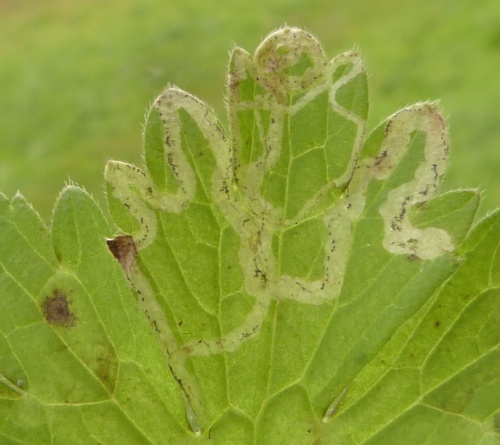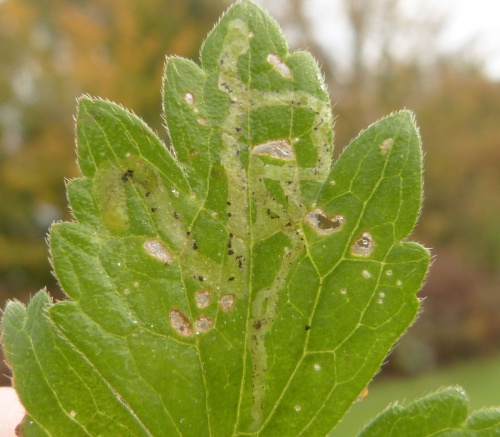Creeping Buttercup - Ranunculus repens
Short to medium generally hairy plant with long creeping and rooting runners. Flowers golden yellow 20 to 30 mm in lax clusters, sepals erect.
Often confused with R bulbosus and R acris - all are common and found in grasslands
Basal leaves - a short section of stalk separates final leaf lobe from two basal side-lobes. Sepals not turned down; fitting underneath the petals
Photos of basal leaves and sepals (a side-on view of flower, not 'full face')
Grassy habitats, especially on wet and heavy soils. Meadows, road verges, marshes, etc.
May to September.
Perennial.
Common throughout Britain.
Very common in Leicestershire and Rutland. In the 1979 Flora survey of Leicestershire it was found in 606 of the 617 tetrads. Listed as Native and Frequent in the current Checklist (Jeeves, 2011)
Leicestershire & Rutland Map
Enter a town or village to see local records
MAP KEY:
Yellow squares = NBN records (all known data)
Coloured circles = NatureSpot records: 2020+ | 2015-2019 | pre-2015
UK Map
Species profile
- Common names
- Creeping Buttercup
- Species group:
- Wildflowers
- Kingdom:
- Plantae
- Order:
- Ranunculales
- Family:
- Ranunculaceae
- Records on NatureSpot:
- 535
- First record:
- 11/05/1992 (John Mousley;Steve Grover)
- Last record:
- 04/05/2024 (Cooper, Barbara)
Total records by month
% of records within its species group
10km squares with records
The latest images and records displayed below include those awaiting verification checks so we cannot guarantee that every identification is correct. Once accepted, the record displays a green tick.
In the Latest Records section, click on the header to sort A-Z, and again to sort Z-A. Use the header boxes to filter the list.
Latest images
Latest records
Phytomyza ranunculi
A leaf mining fly whose larvae mine the leaves of various members of the Buttercup family. In this species the grains of frass are closely adjoining or grouped. Identification is more difficult when the mine is in the stem.
Phytomyza ranunculivora
A leaf mining fly whose larvae mine the leaves of various members of the Buttercup family of plants. In this species the mine is linear, whitish, with frass in widely spaced grains.
